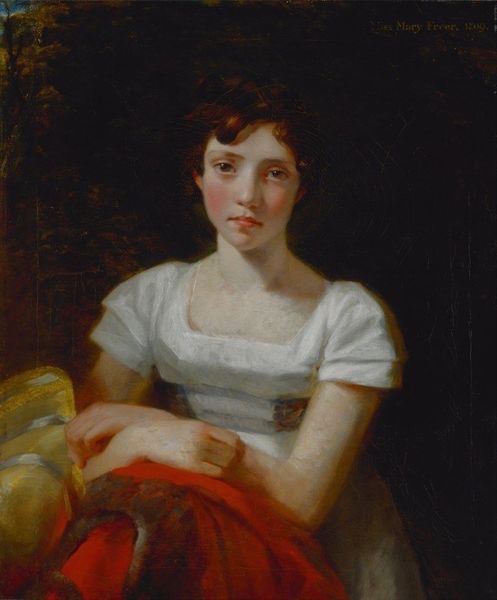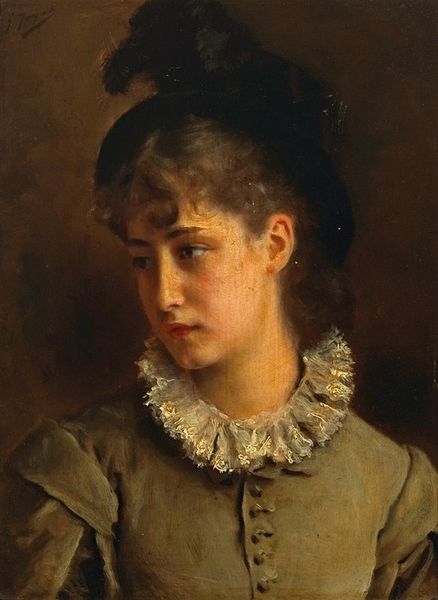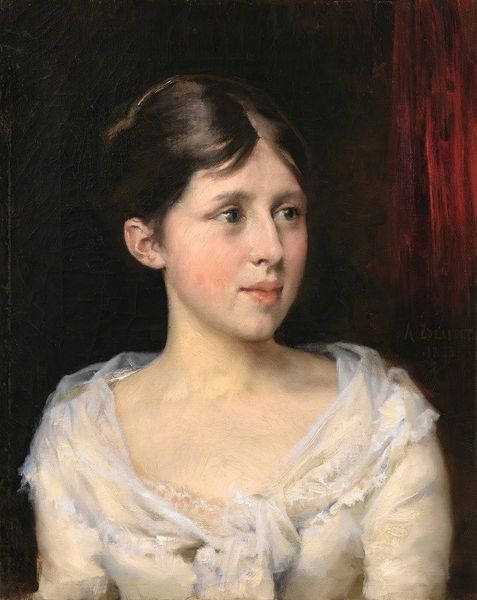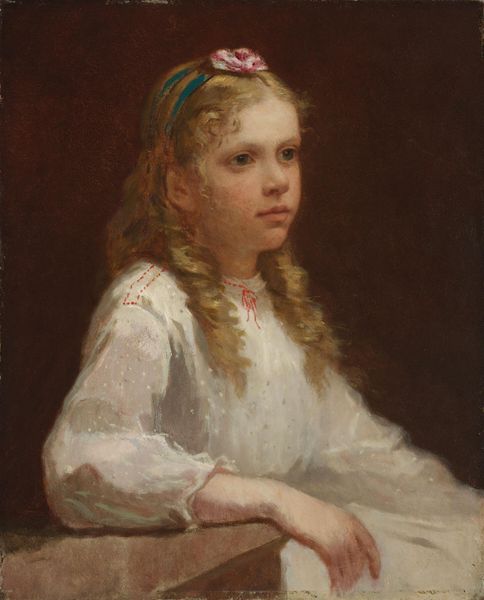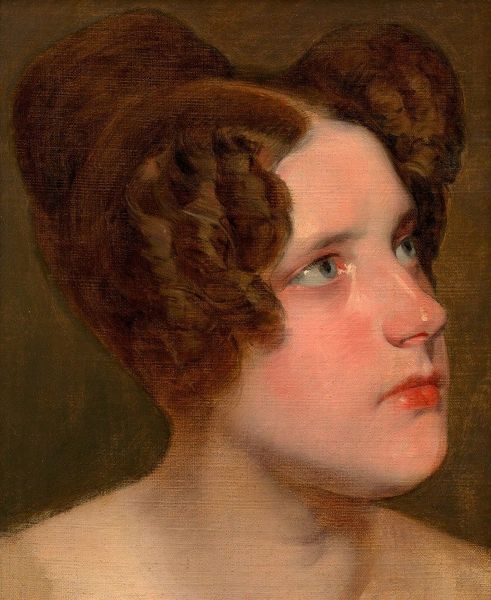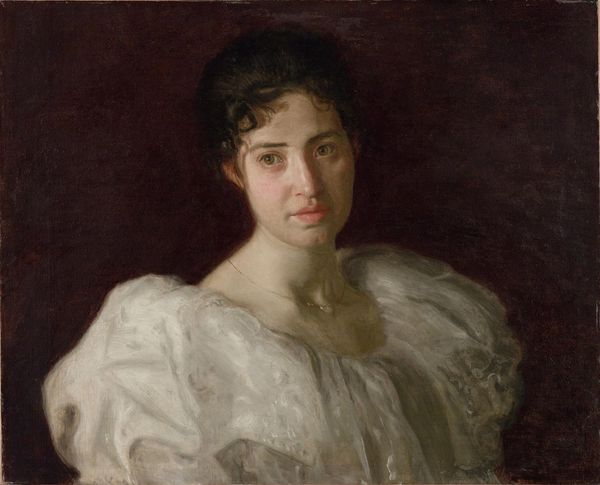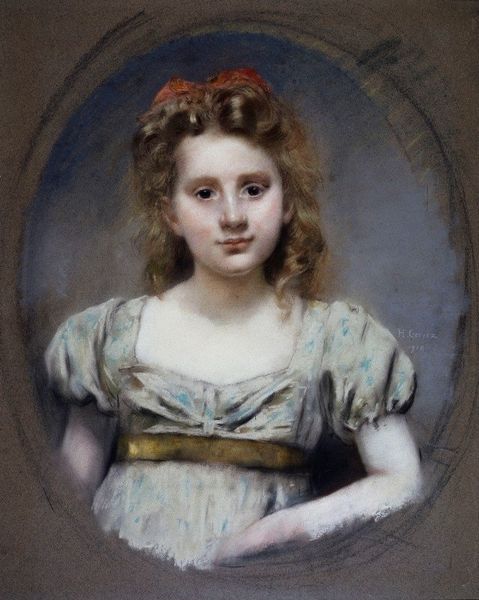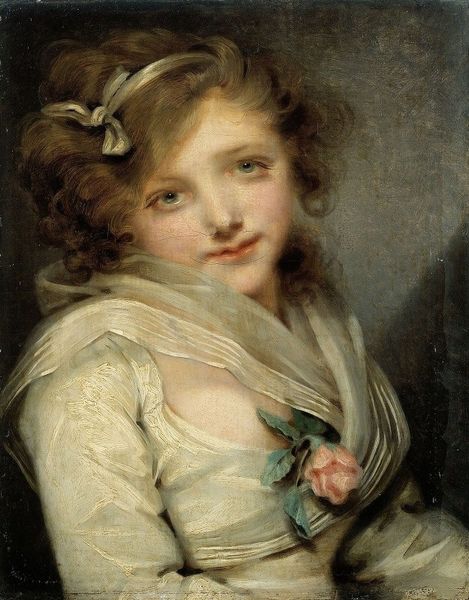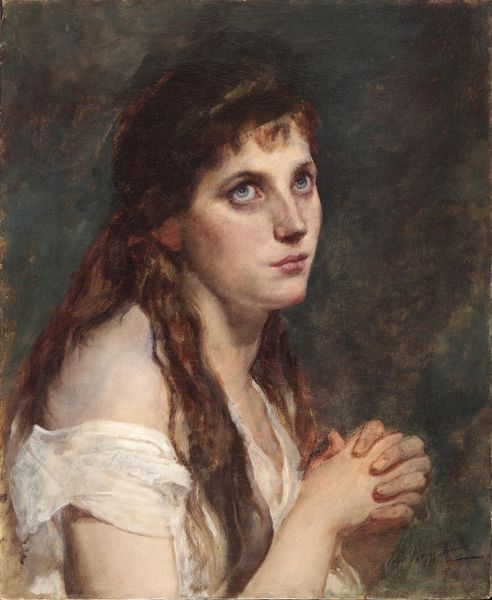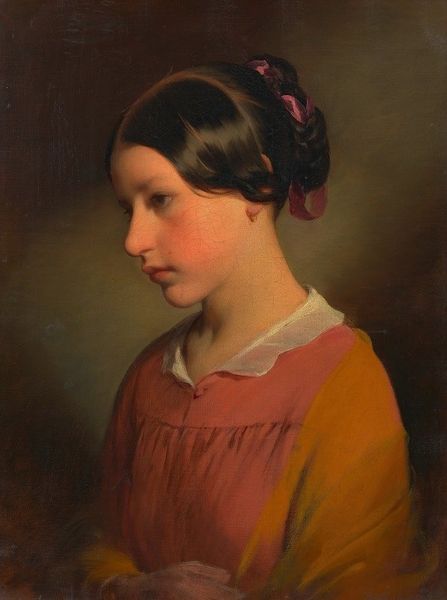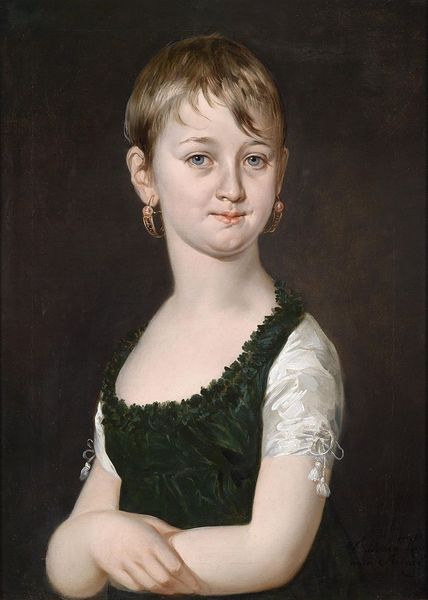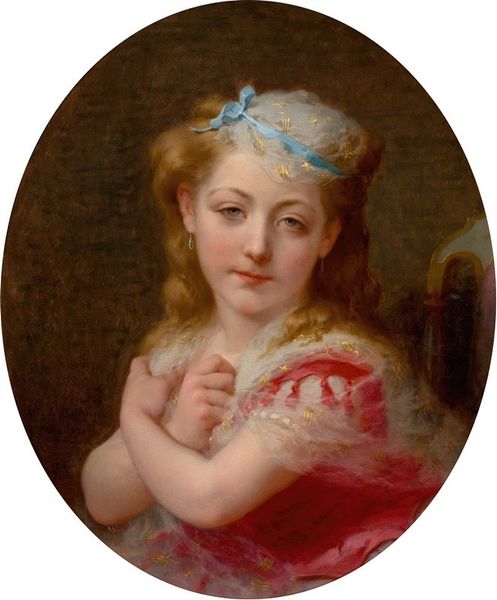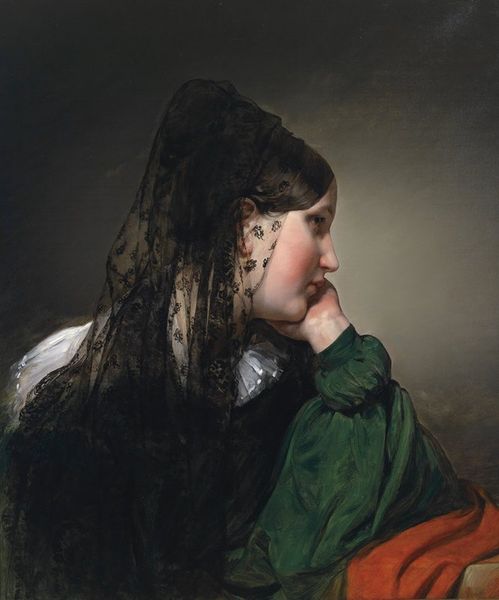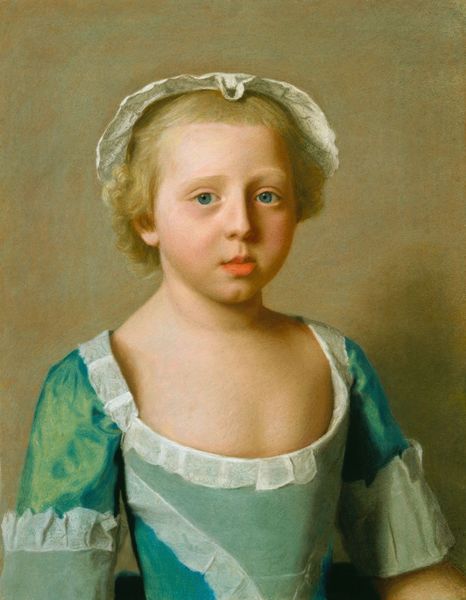
painting, oil-paint
#
portrait
#
figurative
#
painting
#
oil-paint
#
intimism
#
romanticism
Copyright: Public Domain: Artvee
Editor: Here we have Christoffer Wilhelm Eckersberg's 1817 oil painting, "Julie Eckersberg, née Juel, the Artist’s Second Wife". The portrait possesses a quiet, almost domestic feel, wouldn't you agree? What social narratives can you weave from this particular piece? Curator: Well, it’s tempting to see this as simply a portrait of domesticity, a quiet moment captured, but let's consider the socio-political forces at play in early 19th-century Europe. What does it mean to present a woman in such a subdued manner during a period of significant social upheaval? Does it reinforce traditional gender roles, or does it perhaps offer a glimpse into the private sphere as a refuge from public turmoil? Editor: That's interesting! So, beyond just seeing a wife in a portrait, we can view it as a kind of... social document? Curator: Exactly. Consider also the role of the artist himself. Eckersberg was a pivotal figure in the Danish Golden Age, and his style influenced a generation. By portraying his wife in this intimate way, he's making a statement about the value he places on the domestic sphere, but also crafting a specific image of himself. Editor: The ‘Intimism’ tag also feels relevant now. Curator: Precisely. But was it an innocent depiction? To answer that, we need to look at who had access to this art. Was it for public display, reinforcing ideas for public consumption, or purely private, reflecting a privileged intimacy distanced from a lot of society? Editor: I never really thought about how the act of displaying or hiding artwork can change how we see it and the messages it gives off. Thanks, I am walking away with a different lens now! Curator: Absolutely! It encourages us to see art not just as aesthetic objects, but as active participants in cultural conversations, both then and now.
Comments
No comments
Be the first to comment and join the conversation on the ultimate creative platform.
